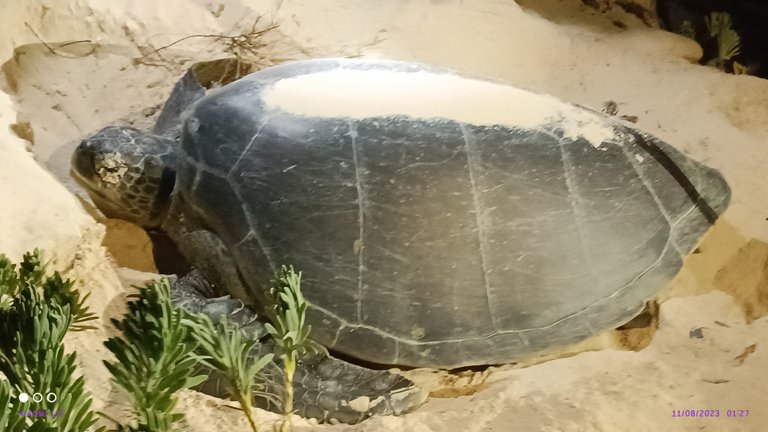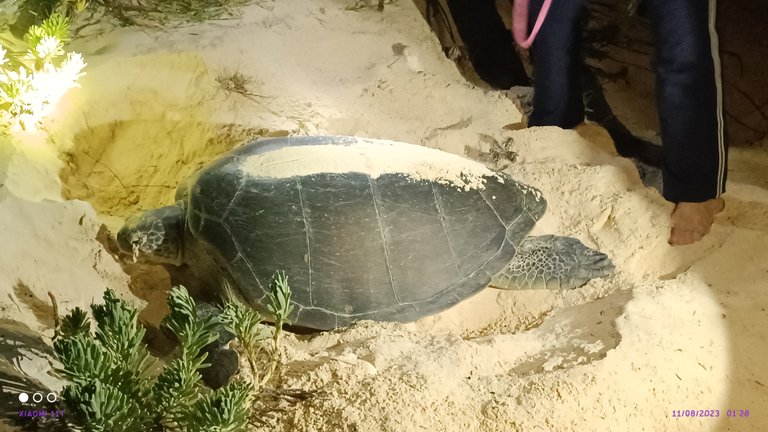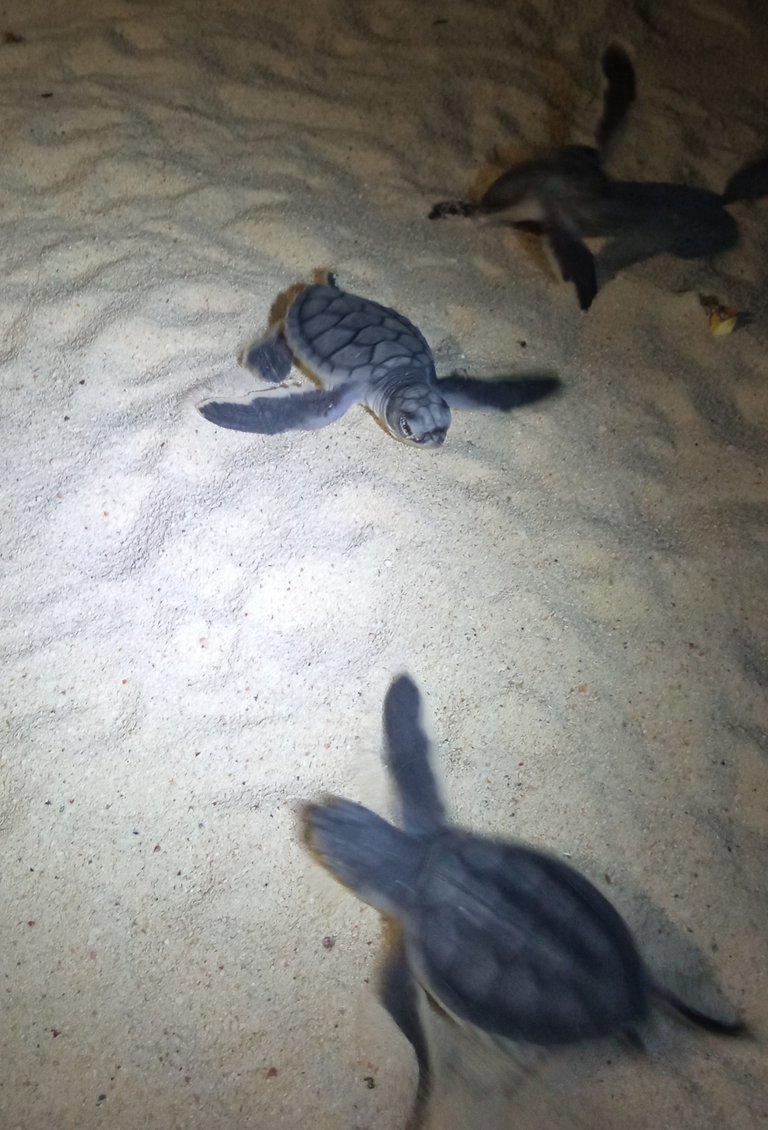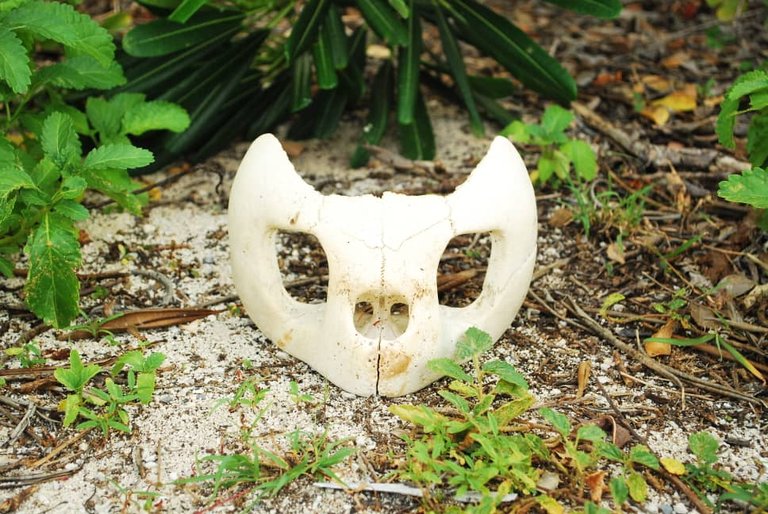
Imagen propiedad de @wolfcifer
Este año me inscribí en un proyecto de preservación de la vida marina en la reserva de biosfera Guanacahavives que se encuentra ubicada en la provincia de Pinar del Río, Cuba. En la etapa de Junio, Julio y Agosto llegan a la playa miles de tortugas marina de la especie Chelonia Mydas Tortuga verde), Caretta Caretta (Caguama) con el objetivo de anidar, dejando sus huevos en la arena.

Imagen propiedad de @wolfcifer
Durante el día las tortugas desde el mar recorren las orillas de la playa buscando la entrada más factible a la arena, una vez determinan la ubicación perfecta esperan pacientes la llegada de la noche. El proceso de anidación es complejo, los voluntarios recorremos las playas durante toda la noche en busca de rastros de entradas a la playa, una vez detectamos una entrada toca esperar a que la tortuga complete el proceso de apertura del nido. El nido tiene dos partes la cámara que consta de un hueco de aproximadamente 30cm más grande que el tamaño de la tortuga y aproximadamente 1m de profundidad, una vez terminada la construcción de la cámara la tortuga procede a la apertura del nido, el nido es un orificio de aproximadamente 60cm de profundidad ubicado en el centro de la cámara que es el lugar donde se depositan los huevos. Durante este proceso que toma aproximadamente 30 minutos por intento los voluntarios debemos permanecer en completo silencio debido a que la tortuga puede irse debido a la presencia humana, durante este tiempo comprobamos con una luz roja imperceptible al ojo de la tortuga el estado de progreso de la construcción del nido.

Imagen propiedad de @wolfcifer
Una vez terminada la construcción del nido la tortuga empezará el proceso de poner los huevos que llegan a ser de 90 a 200 huevos, en este momento hasta una vez concluido el proceso la tortuga permanecerá inmóvil permitiendo a los voluntarios completar el formulario con toda la información de la tortuga y del nido para finalmente colocar el GPS a la tortuga. Los huevos eclosionarán a los 45 días aproximadamente y el sexo de los neonatos dependerá de la temperatura de la arena, si la zona del nido es más caliente que fría entonces la gran mayoría será hembra y si es al contrario entonces la gran mayoría será macho.

Imagen propiedad de @wolfcifer
Tanto la Caguama como la tortuga verde son especies en peligro de extinción dado a que su capacidad de llegar a un estado de edad adulta es muy bajo debido a que de pequeña tiene gran cantidad de depredadores terrestres y marinos, como los cangrejos, las aves y los peces. Sin embargo fuera del circulo natural de la vida el hombre es la mayor amenaza hoy en día debido a que les están dando caza furtiva reduciendo la población bruscamente. La tortuga se considera un platillo de alta cocina y sus huevos un afrodisiaco sin embargo ambas son solo leyendas salidas de mentes fantasiosas, al hombre no le importa extinguir otra especie con tal de poder alardear del consumo de una especie exótica. ¿Será este el fin de la tortuga marina o aún estamos a tiempo de remediarlo?.
I hope you liked it, leave me your opinion below. Thank you for supporting me by reading 🐢👍